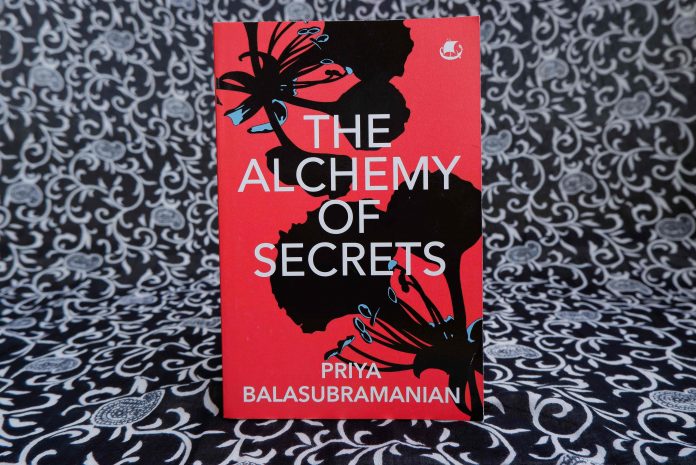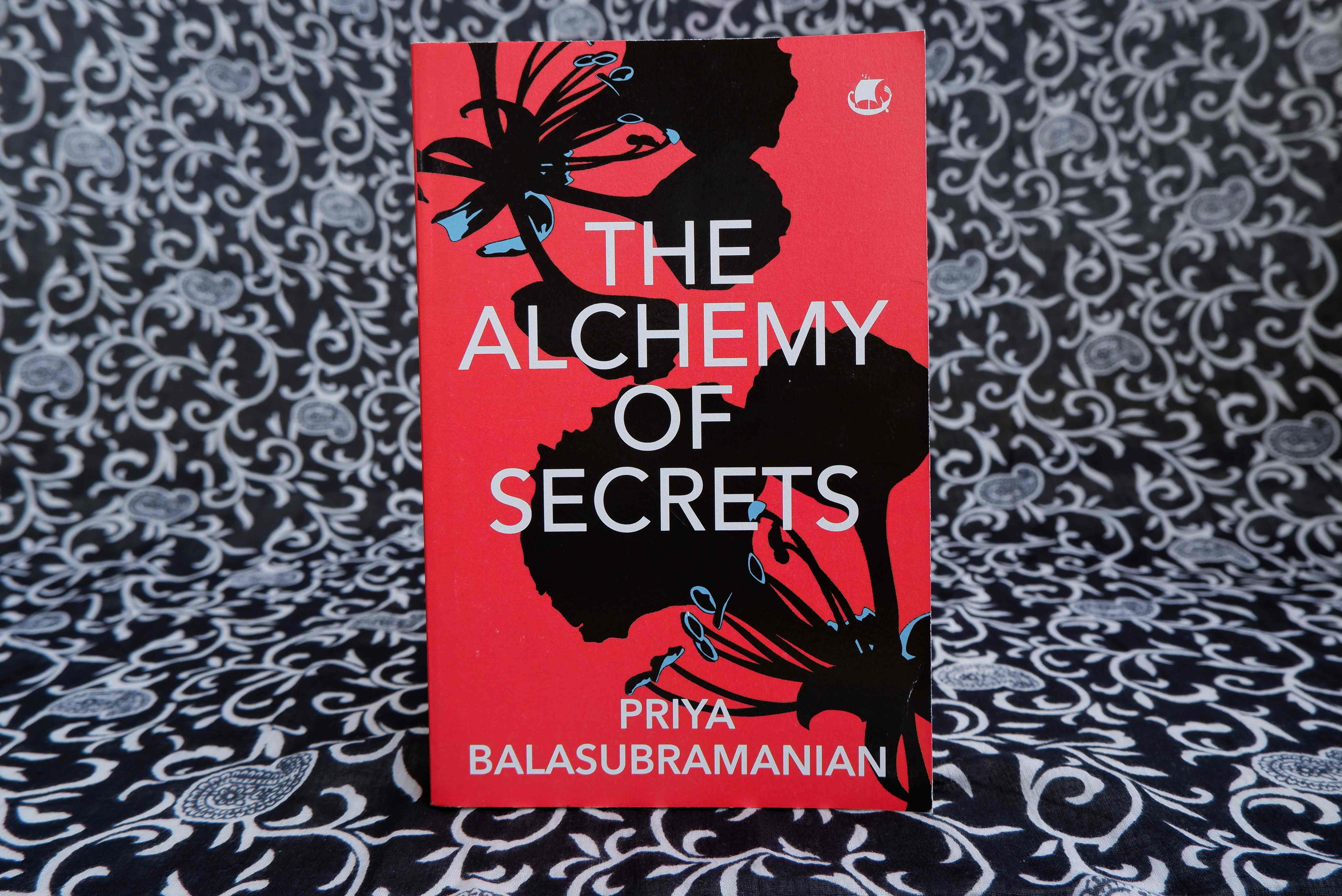The Alchemy of Secrets
by Priya Balasubramanian
Publisher: Tranquebar (2020)
When I was given a choice by Atta Galatta to select a book to review, the Bangalorean in me naturally choose the book that is set in Bangalore, my beloved hometown. And as I opened the first page, I knew I had made the right choice.
The first few lines into the book, you feel yourself taken into that magical era of Bangalore, where vendors and customers conversed with each other about personal family matters, where one could still find sparrows flying around in the city and where entertainment for little children came in the form of grandma’s stories.
The author unmistakably creates a visually vibrant scene in front of your eyes. Even the minutest details, which we usually ignore in our mundane activities, are so accurately captured and presented to you in words that you feel you’re not just reading the book, but also living it. It is not easy to describe the frenzy look of a person who’s in a hurry or the simple aroma of coffee, but the author accomplishes this task effortlessly. She also has a unique trait of bringing life to inanimate objects such as streets, walls, buildings and vehicles, describing each of them as beautifully as she describes the innermost feelings of the characters.
Women play a critical part in this story. On the surface, one might assume this is because the author herself is a woman. However, on closer introspection, you will find that it has always been the womenfolk who hold together the delicate threads of all relationships within a family and it is they who can hear the unspoken words and perceive the unshown emotions. For better or for worse, the emotional wellbeing of a family has always been thrust upon the shoulders of women – young and old.
Ajji, the matriarch of the family, is a formidable force and pillar of her family, even when she’s on her deathbed. She is a traditional wife, a caring mother, a strict grandmother and a resolute woman all at once. She is very much at the center of this story and it is interesting to read how every other character revers and remembers her in his/her own way.
Whereas Vimala is the quintessential daughter-in-law and wife, Radhika is progressive woman, much to the dislike of many. Mira and Anisa are the two best friends, laughing and giggling on the streets as they walk to and fro to the library, in a still conservative Bangalore.
It is the close friendship between the two young girls and two young women that is the most endearing part of the book. Where one friendship is brought about from growing up together, dismissing the cultural and religious differences, the other is brought about by the exceptional respect and attention they share between each other, having grown up in a world that treated them as inconsequential.
The author successfully builds up the suspense over an impending doom, chapter by chapter, that keeps you turning the pages.
Set in a time where just glancing at the opposite sex was considered scandalous, it is interesting to note the varying ways in which every generation professes and proclaims its love. From Ajji’s Malehalli and her gandhian husband, to Vimala’s Bangalore and her ambitious husband, to Mira’s California and her hyperactive pet, the story beautifully shows how our traditions and customs, our culture and society, metamorphose from one generation to the next. One moment in particular where I realized how much things have changed in our society over the recent decades, is when I found a young girl feeling extremely guilty for having a simple crush on a boy, which is something unimaginable for us today, where teenagers are quite accustomed to having girlfriends and boyfriends. The transformation in society’s views on freedom and values is very visible throughout the book.
However, even as some things evolve, sadly some things remain much the same. Our family customs shape us much more than we ‘woke’ folks consciously accept. Casteism and prejudices run deep within our veins, which is why despite the laws abolishing discrimination years ago, we still find caste playing a vital role in our country’s socio-political stage. As the country progresses from independence to chacha Nehru’s leadership to the dark era of emergency to identity politics, so do the characters, who are unsuspectingly impacted and influenced by the politics and economics of the nation.
Most readers might laugh at the blatant hypocrisy of some characters, the politics of casteism and the rise of religious sadhus and regard this book as mere fiction. Yet, you only need to take one real look on the news channels to make you realize that every statement written here is true to its word. Where some find solace in religion, others consider religion as a mandate that must be followed to the t, and few others use religion as a tool to fulfil their ambitions. It is no doubt that the author has keenly observed the world around us and articulately inculcated the mannerisms and beliefs of real people into the story.
Sadly, our society has an infamous quality of posting guilt to the wrong address. We readily ignore heinous crimes committed by some and elect them to preside over us, while we harshly punish those who cross the line of archaic traditions put up by the society.
Weaving the story through archetypical Karnataka delicacies such as tamarind chutney and neer dosa, the author compels us to introspect the unconscious biases we are guilty of having and evolve ourselves to discern the same biases in the society outside.






RELATED ARTICLESMORE FROM AUTHOR
Swallowing the Sun
Daiva: Discovering the Extraordinary World of Spirit Worship
The Book Of Everlasting Things